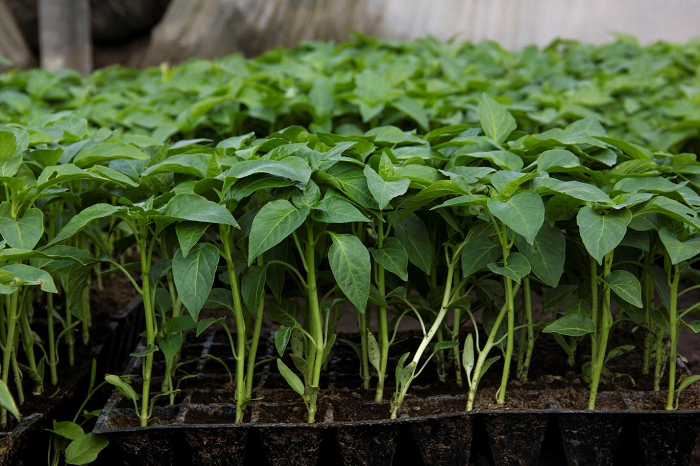Experienced gardeners and gardeners are well aware of the early planting of seeds of some vegetable crops. For seedlings, it is necessary to start sowing in February.
But not every crop is planted at these times. Let’s talk about vegetables, the seeds of which are sown in February. More details can be found in Useful tips, which lists the advantages and disadvantages of growing seeds for seedlings in February.
Experts advise starting with crops such as eggplant and bell pepper, sowing at the beginning of the month, by the middle, work is being done with tomatoes and celery.
According to the information portal Kharkiv news, where there are articles about the benefits of growing the above crops in February:
- seedlings will get stronger by the time they land in the ground;
- early ripening of fruits, etc.
The disadvantages include the need for additional lighting, top dressing with mineral fertilizers and susceptibility to diseases when planting in the ground.
Peppers and eggplants are quite capricious and do not tolerate transplantation well. Therefore, two seedlings are placed in the container in order to extract a weak sprout. In the process of cultivation, seedlings are protected from direct sunlight. Cultivation is carried out at a temperature of 14 to 16 degrees.
The information section of company news recommends planting paprika 2.5 months after seed germination. At the time of planting, the sprouts should have 8-12 leaves, the length of which varies from 20 to 30 cm.
February planting for seedlings of tomato and celery seeds
Tomato seeds germinate well at a temperature of 20-25 degrees, the process lasts for 10 days.
During the transplantation of tomato seedlings, they try to protect them from exposure to direct sunlight. Seedlings are planted in the ground that have reached a height of at least 30-35 cm. They must have from 7 to 8 leaves and a flower ovary.
To get good seedlings from celery seeds, you need to know some subtleties. The material is placed in a container and poured with hot water (from 40 to 50 degrees). This is necessary for germination, as celery seeds release an essential oil. If it is not washed off with hot water, it will not allow the seed to fully sprout.
Celery germinates well at a temperature of 18 to 25 degrees, the process moves very slowly.
For two days after sowing, I keep the material at a cool temperature, so they will strengthen well. If you want to get a good harvest of celery, when planting seedlings, make sure that they are placed at the same depth.

